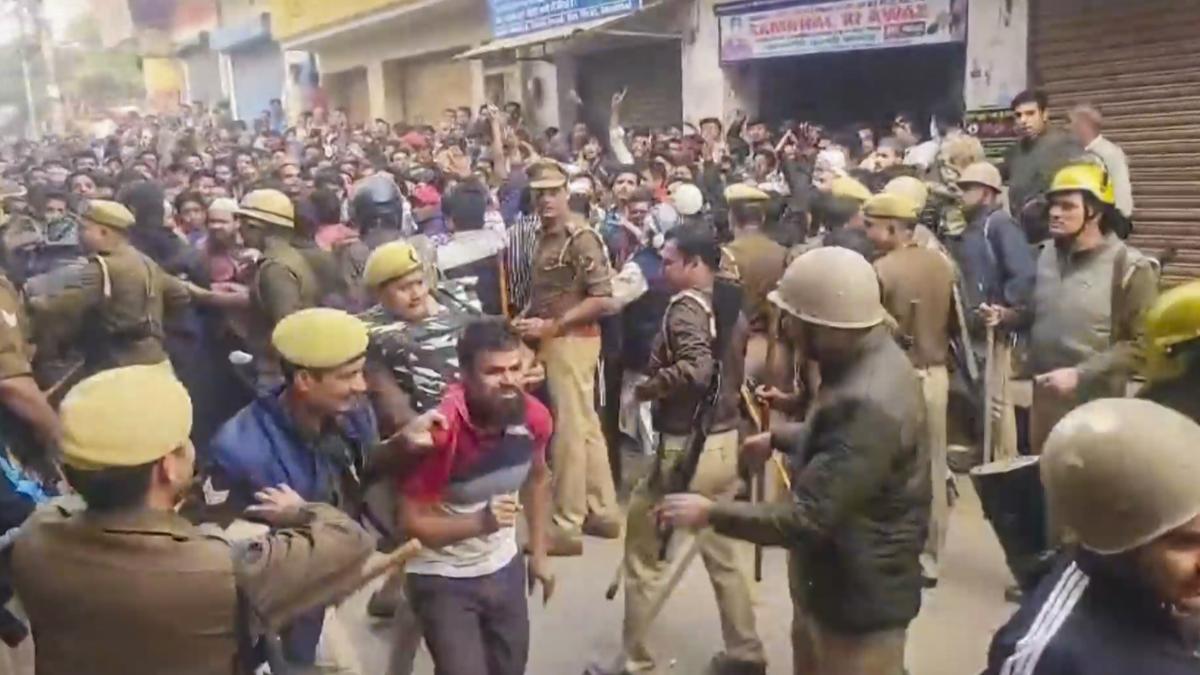 |
|
The events unfolding in Sambhal, Uttar Pradesh, on November 23, 2024, highlight a deeply sensitive and complex issue concerning religious tensions and the legal processes surrounding historical structures. A local court order initiated a survey of the Shahi Jama Masjid mosque, fueled by a complaint alleging the mosque was constructed after the demolition of a Hindu temple by Mughal rulers. This seemingly straightforward legal procedure ignited a firestorm of protest, leading to violent clashes between police and a large crowd gathered to oppose the survey. The resulting confrontation underscores the precarious balance between religious harmony and legal processes in a region with a long history of religious diversity and often fraught inter-community relations.
The incident underscores the challenges faced by law enforcement agencies in navigating sensitive religious issues. While the police were present in large numbers, the scale of the protest and the intensity of the stone-pelting overwhelmed their initial attempts at crowd control. The decision to deploy tear gas, while described as ‘mild’ force, itself is a point of contention and raises questions about the proportionality of the police response and the potential for further escalation. Furthermore, the fact that the survey proceeded despite the violence raises questions about the appropriateness of the legal process in such a volatile situation and the potential for further inflaming tensions within the community. The actions of both protesters and law enforcement will likely be subject to scrutiny, demanding a thorough investigation into the use of force and the handling of the protests.
The core issue at the heart of the conflict, the claim of a temple being demolished to build the mosque, speaks to a larger historical narrative deeply embedded in the collective memory of both Hindu and Muslim communities in India. Such claims often become highly charged political symbols, easily exploited by extremist elements seeking to further their own agendas. This case serves as a stark reminder of the potential for historical grievances to be re-ignited and manipulated in the present day, leading to violence and instability. The role of social media and its potential to amplify these narratives and incite unrest also deserves serious consideration. In the aftermath of this incident, a critical assessment of the role of historical interpretations, the use of legal processes in highly sensitive situations, and the responsibility of community and political leaders in de-escalating tensions is necessary.
Moving forward, there is a pressing need for a multi-faceted approach to resolving such conflicts. This necessitates a more nuanced understanding of the historical context, open dialogue between religious leaders and community representatives, and a robust and transparent legal process that considers the sensitivities involved. The government must also play a proactive role in promoting interfaith harmony and fostering an environment of mutual respect and understanding. A heavy emphasis on education and promoting a sense of shared history and national identity can be pivotal in preventing similar incidents from occurring in the future. The incident in Sambhal serves as a cautionary tale, highlighting the urgency of addressing underlying religious tensions and the need for effective strategies to prevent their escalation into violence.
Furthermore, the role of the media in reporting such events requires careful attention. While accurate reporting is crucial, it is equally vital to avoid language that could inflame tensions or contribute to the spread of misinformation. Responsible journalism should aim to provide context, promote understanding, and encourage peaceful resolution of conflicts. The aftermath of the Sambhal incident presents an opportunity for the media to reflect on its role in shaping public perception and contributing to a more peaceful and inclusive society. The longer-term implications of this event extend beyond the immediate violence, raising profound questions about social harmony and the potential for similar incidents to occur elsewhere. It underlines the need for a more comprehensive national strategy focused on conflict resolution and community building.
Finally, the incident in Sambhal requires a thorough investigation to determine the full extent of responsibility and to ensure accountability for any acts of violence or misconduct. This investigation must be impartial and transparent, providing a platform for all parties involved to present their accounts and ensuring that justice is served. The outcome of this investigation will be crucial in determining the future trajectory of community relations in Sambhal and setting a precedent for the handling of similar incidents in other parts of India. The need for peaceful coexistence and respecting the legal processes is paramount, and a commitment to dialogue and understanding is essential for moving forward.
Source: Sambhal mosque survey: Uttar Pradesh Police use tear gas to disperse crowd throwing stones
